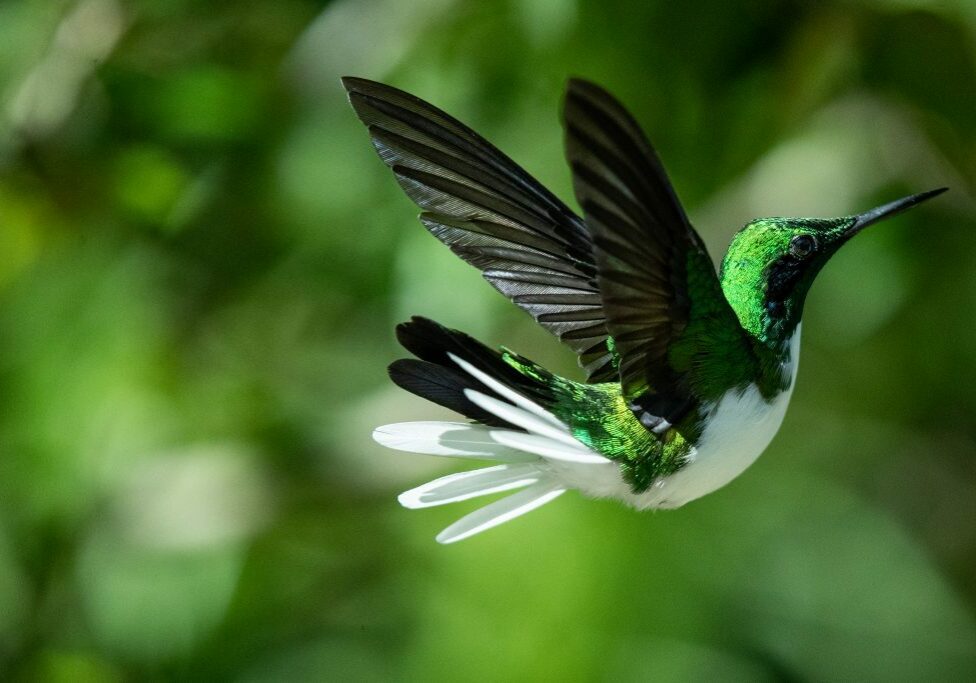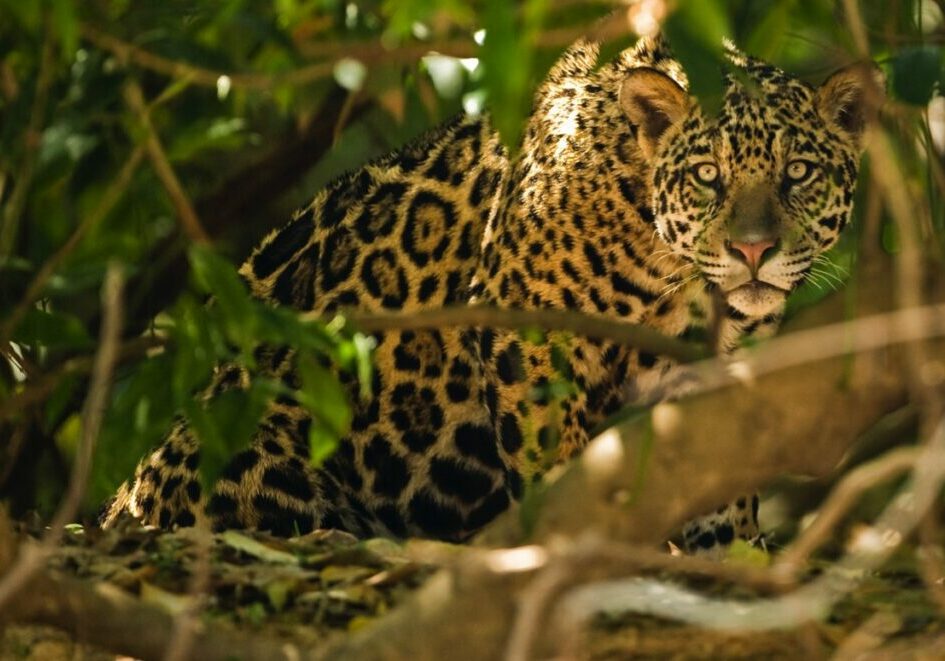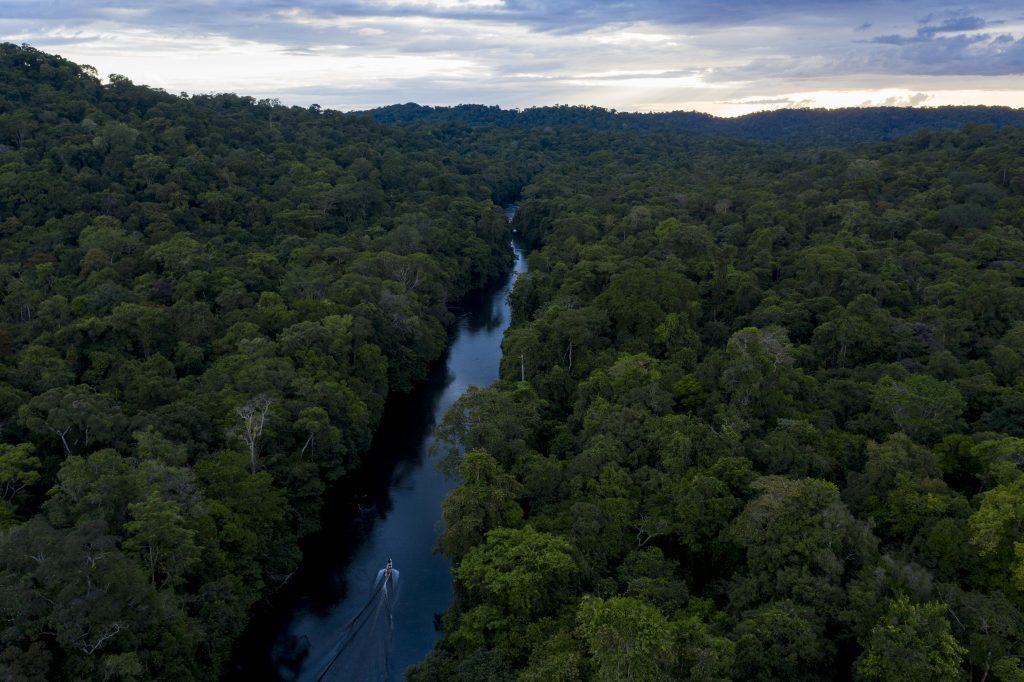
To begin his quest, Emmanuel travelled deep into the heart of the rainforest. His starting point was a research station located eight hours by canoe, then four hours on foot from the nearest village. With their roots embedded in one of the oldest exposed rock surfaces in the world – the Guiana Shield – these Amazonian forests are remote and mysterious. They form part of one of the largest areas of protected rainforest in the world, covering a region the size of Scotland. Experts believe 80% of the wildlife living here is still unknown to science.

Even in this remote region, gold mining is a serious threat to the jaguar and the rainforest. The toxic mercury used to flush out the gold is released into the rivers, poisoning the water, soil and air, and being absorbed by plants and animals – and even the local people who consume them. It leaves behind a desolate landscape. So patrols look for gold mining camps and destroy any equipment they find to prevent miners from resuming their illegal activities. Sadly, gold mining isn’t the only danger the jaguar faces. Loss of its prey and habitat, retaliation for killing livestock, and increasing demand for their body parts all threaten the survival of this awe-inspiring species.

Perched on top of a 45m-high pylon at the rainforest research station, Emmanuel enjoyed spectacular views across the canopy, while a scientist from the French National Centre for Scientific Research checked on his cutting-edge climate monitoring equipment. The ‘Nouraflux’ takes 10 readings every second to analyse how much carbon dioxide the forest absorbs from the atmosphere. Each hectare here absorbs 3kg of CO2 per year, or about a fifth of the average Briton’s carbon footprint. Therefore, protecting these tropical forests is not just crucial for jaguars and the other amazing creatures that live here, it’s vital for combatting climate change as well.
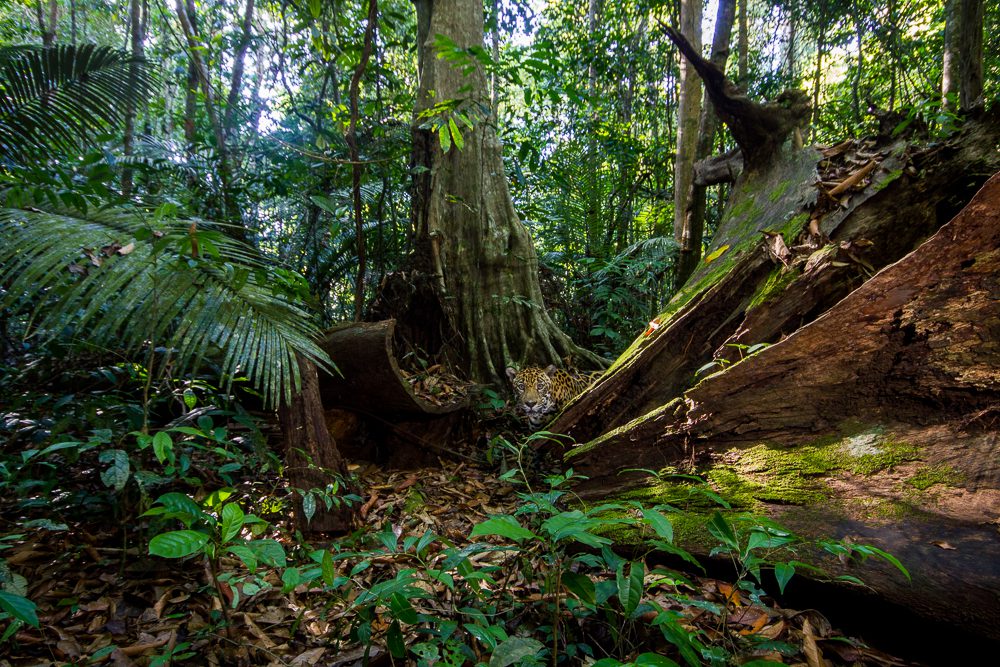
Success at last! Despite challenges – from the intense humidity to camera vandalism by a clumsy tapir – Emmanuel finally captured the first high-definition image of a wild jaguar in this reserve. Discovering more about the jaguars’ habits and movements will help us to protect and connect its most important habitats. And it comes at a perfect time: in 2018, governments in 14 countries that are home to jaguars made a public commitment to ramp up their conservation efforts. With your support, we’ll continue working tirelessly to secure a bright future for these incredible cats.

Once believed by the ancient Maya to be a god of the underworld, today the jaguar faces all-too-human threats. The biggest cat in the Americas has already been pushed out of around half of its historic range, and its remaining rainforest home is under pressure. Though around 170,000 jaguars are thought to remain in the wild, we know surprisingly little about them. So improving our knowledge of their distribution and behaviour is critical to protecting them and their final strongholds, such as the Amazon rainforest. One way to do that is with camera traps, which captured this curious cat in Nouragues Nature Reserve, French Guiana.
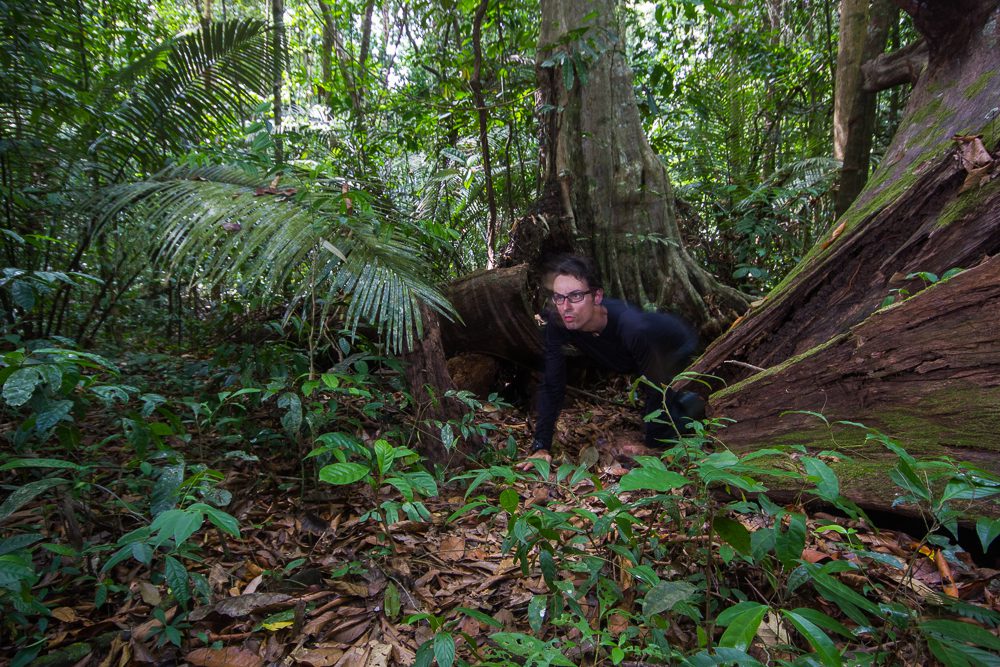
Camera traps offer vital insights into elusive animals such as jaguars. Emmanuel set up eight cameras in the forest to capture video and photos whenever an animal crossed an infrared trigger. This might sound straightforward, but first he had to identify a trail used by jaguars and then make sure any passing cats would be in sharp focus. Here he is pretending to be a jaguar and crawling into view! Once everything was set up, Emmanuel left his cameras in the forest for two months – and crossed his fingers.
• This is an edited version of an article that originally appeared in WWF Action magazine in 2019.
More to explore

Gallery: Richard Barrett’s Wild World
Join photographer Richard Barrett on a tour of the globe in search of some of its most legendary creatures in his new photo book
